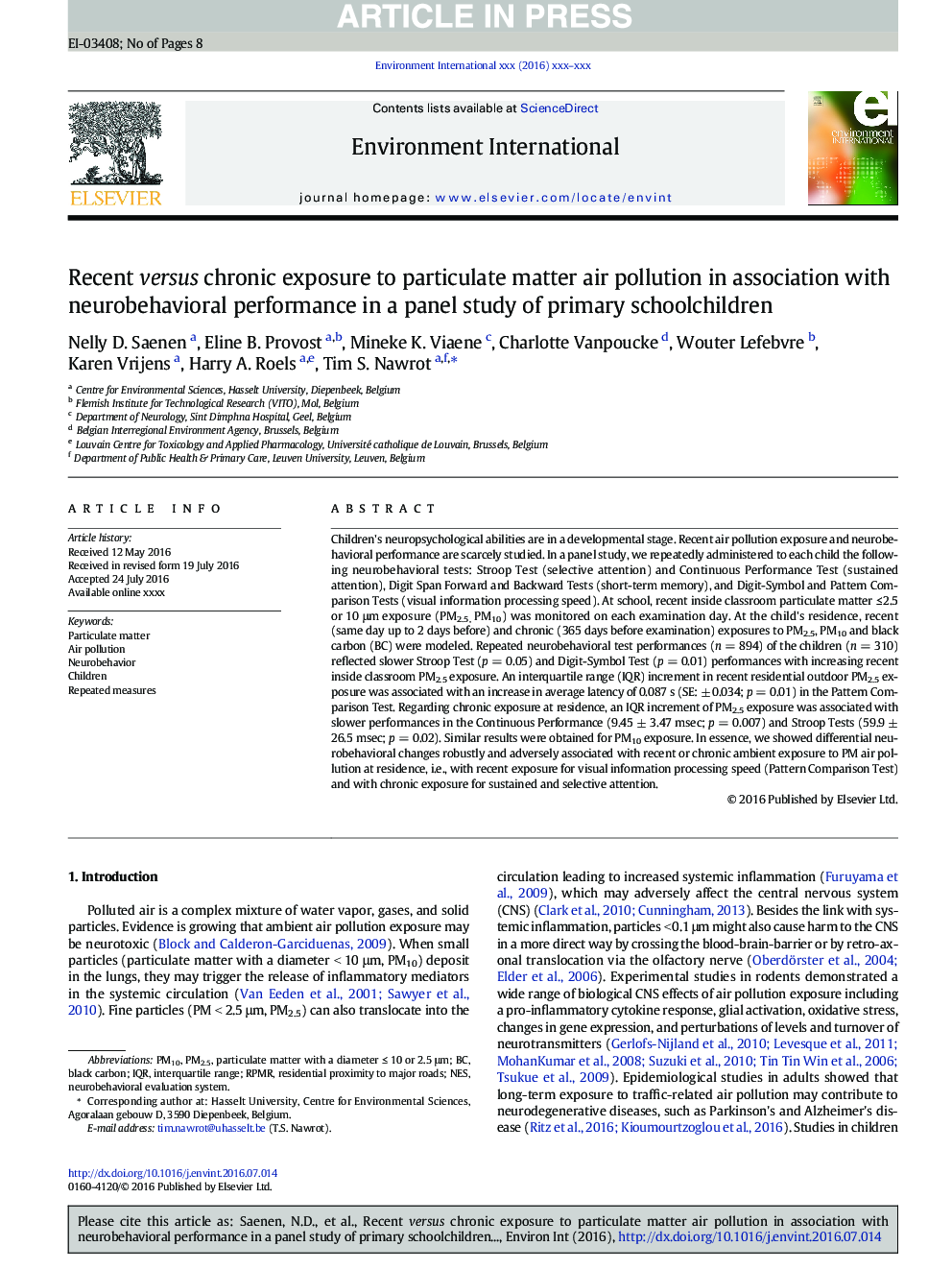| Article ID | Journal | Published Year | Pages | File Type |
|---|---|---|---|---|
| 6312714 | Environment International | 2016 | 8 Pages |
Abstract
Children's neuropsychological abilities are in a developmental stage. Recent air pollution exposure and neurobehavioral performance are scarcely studied. In a panel study, we repeatedly administered to each child the following neurobehavioral tests: Stroop Test (selective attention) and Continuous Performance Test (sustained attention), Digit Span Forward and Backward Tests (short-term memory), and Digit-Symbol and Pattern Comparison Tests (visual information processing speed). At school, recent inside classroom particulate matter â¤Â 2.5 or 10 μm exposure (PM2.5, PM10) was monitored on each examination day. At the child's residence, recent (same day up to 2 days before) and chronic (365 days before examination) exposures to PM2.5, PM10 and black carbon (BC) were modeled. Repeated neurobehavioral test performances (n = 894) of the children (n = 310) reflected slower Stroop Test (p = 0.05) and Digit-Symbol Test (p = 0.01) performances with increasing recent inside classroom PM2.5 exposure. An interquartile range (IQR) increment in recent residential outdoor PM2.5 exposure was associated with an increase in average latency of 0.087 s (SE: ± 0.034; p = 0.01) in the Pattern Comparison Test. Regarding chronic exposure at residence, an IQR increment of PM2.5 exposure was associated with slower performances in the Continuous Performance (9.45 ± 3.47 msec; p = 0.007) and Stroop Tests (59.9 ± 26.5 msec; p = 0.02). Similar results were obtained for PM10 exposure. In essence, we showed differential neurobehavioral changes robustly and adversely associated with recent or chronic ambient exposure to PM air pollution at residence, i.e., with recent exposure for visual information processing speed (Pattern Comparison Test) and with chronic exposure for sustained and selective attention.
Keywords
Related Topics
Life Sciences
Environmental Science
Environmental Chemistry
Authors
Nelly D. Saenen, Eline B. Provost, Mineke K. Viaene, Charlotte Vanpoucke, Wouter Lefebvre, Karen Vrijens, Harry A. Roels, Tim S. Nawrot,
